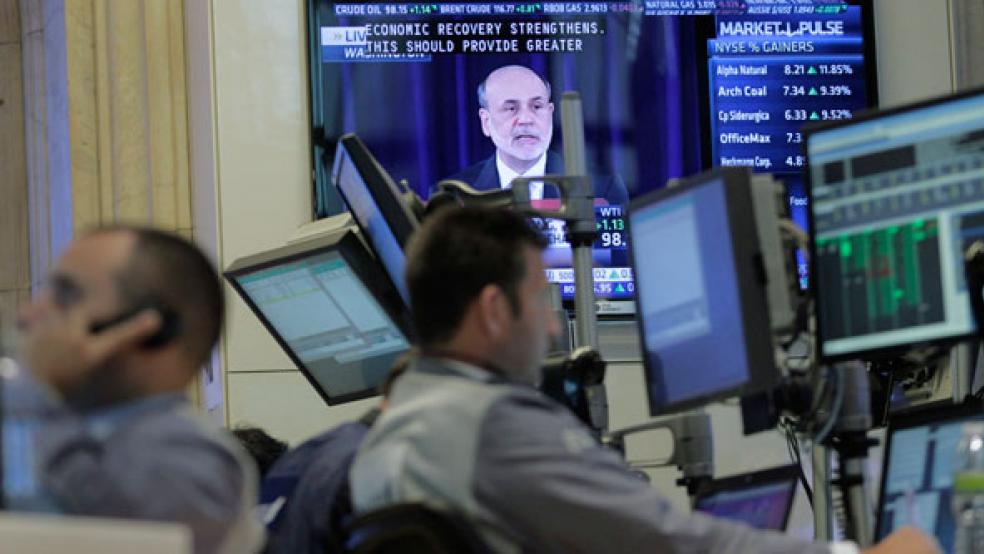When top Federal Reserve officials speak these days, the markets get extremely nervous.
The Dow Jones Industrial Average has plummeted 2.12 percent – or 325 points – since Fed Chairman Ben Bernanke last week fleshed out the central bank’s guidelines to wind down its stimulus program that buys $85 billion worth of bonds each month. Interest rates on 10-year Treasury notes have also surged, as have mortgage rates.
RELATED: WHY BERNANKE CAN STOP BEING OUR DESIGNATED DRIVER
Fed officials this week embarked on damage control in a series of speeches and public appearances. They’re making the case for economic strength in a country that continues to cope with anemic growth levels.
Many have reiterated Bernanke’s core message that the Fed will only consider stopping its debt purchases if new hiring brings the unemployment rate to 7 percent from 7.6 percent. The Fed chairman told reporters that current estimates suggest this would happen in the middle of 2014, but that the economic data would guide any decisions.
Their words, however, have yet to settle investors.
Fed governor Jerome Powell said Thursday that Wall Street needs more time to digest the impact of Bernanke’s disclosures.
“The markets are still sorting this out. The markets are clearly still processing this. So it’s very hard to say what the market reaction ultimately is, because it’s still evolving very much,” Powell said during a question-and-answer period at the Bipartisan Policy Center. “This is bigger than I would have hoped. But again, it’s still in motion. We need to wait a couple more weeks.”
Powell suggested the market may have amplified the impact of the announcement as traders needed to exit positions they bought during the recent period of low volatility.
Stocks actually rebounded by 1.02 percent after the government lowered its earlier estimates of first quarter Gross Domestic Product to 1.8 percent from 2.4 percent. Investors assumed that slower growth should cause the Fed to back down on its plans to ease up its bond purchases, a policy informally known as QE3, which stands for the third round of quantitative easing adopted by the central bank since the start of the 2008 financial crisis.
Powell said that he “wouldn’t dismiss” the downward revision, but that he still saw personal consumption expenditures as strong despite the headwinds caused at the start of this year by the ending of the Social Security payroll tax holiday.
William Dudley, president of the Federal Reserve Bank of New York, tried to explain the Fed policy is flexible, since it will depend on economic conditions. But this could create uncertainty if that path of the economy diverges from what Fed officials have projected.
Fed “policy depends on the progress we make towards our objectives,” Dudley said in prepared remarks at a press briefing. “This means that the policy, including the pace of asset purchases, depends on the outlook rather than the calendar.”
James Bullard, president of the Federal Reserve Bank of St. Louis, voted against the policy announced last week, out of concern that inflation has been too modest, a potential sign of slack in demand and the need for more monetary stimulus.
Unlike many of his Fed colleagues, Bullard has said the Federal Open Market Committee – which sets policy – did tighten its policy.
“It’s all about tighter policy,” Bullard told The Washington Post last week. “You can communicate it one way or another way, but the markets are saying that they’re pulling up the probability we’re going to withdraw from the QE program sooner than they expected, and that’s having a big influence.”




